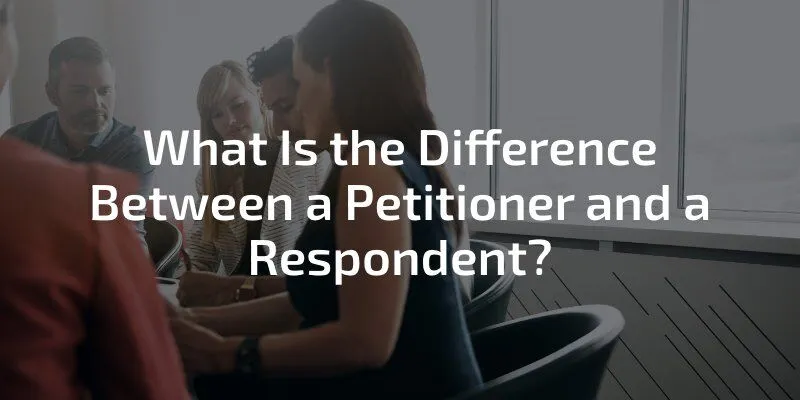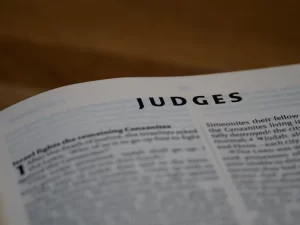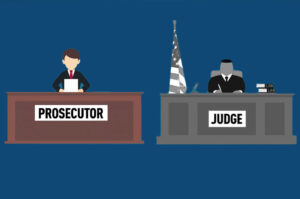What is a Petitioner in Court?
A petitioner is an individual or entity that formally commences a legal case by filing documentation with a court. The petitioner initiates court proceedings to obtain legal relief or request the court’s intervention in resolving a dispute. The opposing party who must respond to the petitioner’s complaint or petition is known as the respondent.
Filing a Lawsuit as the Petitioner
The most common situation in which someone takes on the role of a petitioner is when filing a civil lawsuit. The petitioner drafts and submits the initial complaint that sets out the factual and legal basis for the case.
Key Elements of a Lawsuit
For a lawsuit to move forward, the petition must contain certain key components:
The Complaint
The complaint identifies the parties, outlines what happened, and requests relief from the court. It asserts legal theories establishing the respondent’s liability.
Service of Process
The petitioner arranges formal service of process to notify the respondent of the lawsuit. This meets procedural rules so the respondent has a chance to respond.
The Respondent’s Answer
The respondent must submit an answer responding to the factual allegations and legal claims in the complaint. The answer may also raise affirmative defenses.
Types of Court Petitions
Beyond civil complaints initiating lawsuits, petitioners also submit petitions in other court proceedings:
Petitions to Initiate Divorce Proceedings
Petitions serve to commence divorce cases. The petitioner files paperwork, typically referred to as a petition or complaint for divorce, with the appropriate state court requesting dissolution of the marriage.
Contents of a Divorce Petition
A divorce petition sets out information about the marriage and requests the court dissolve it. The petition usually identifies shared assets for the court to divide during the proceeding.
Petitions for Orders of Protection
Petitioners may seek orders of protection from the court by filing petitions alleging domestic abuse, stalking, or harassment by the respondent.
Elements of Protection Order Petitions
The protection order petition describes the respondent’s conduct necessitating court intervention to prevent further harm to the petitioner. Some states have standardized forms for these petitions.
Probate Court Petitions
In probate court, the petitioner opens the probate process by filing either a petition to start estate administration or a petition to interpret the will.
Petitions to Open Estates
These petitions identify the petitioner’s connection to the deceased, provide information about heirs, name an estate administrator, and inventory assets.
Petitions to Interpret a Will
Beneficiaries or executors file these when the will’s provisions require clarification by the court before distribution of the estate.
Responding to a Court Petition
When someone is named as a respondent in a petition, they must take certain steps to engage in the court process.
Drafting an Answer to a Complaint
For civil complaints, the respondent must carefully prepare an answer admitting, denying, or claiming insufficient knowledge about each factual allegation. Deadlines are strict.
Including Affirmative Defenses
The answer should raise any affirmative defenses the respondent wishes the court to consider, like statutes of limitations that may bar claims.
Attending the Court Hearing
In protection order cases, the respondent has an opportunity at the hearing to present counter testimony and legal arguments against issuance of an order.
Presenting Counter Arguments
The respondent can argue the protection order is unnecessary or based on false allegations. However, orders commonly issue if the petitioner shows reasonable fear of harm.
Working with a Lawyer on Petitions
Since petitioners set in motion a complex legal process involving precise procedures, working with an attorney from the outset helps ensure filings are air tight.
Deciding if You Need Representation
You may be able to self-petition for simple divorces or protection orders. However, hiring a lawyer is wise for probate disputes over substantial estates or civil lawsuits involving complex legal theories.
Finding an Attorney Experienced in Petitions
Seek referrals to lawyers concentrating in family law, trusts and estates, or civil litigation depending on your case type. Verify they have petition experience.
Preparing Relevant Documents and Evidence
To build the factual foundation for your petition’s claims, pull together Documentation, Records, photos, affidavits from witnesses, and anything else supporting the allegations.
What Is the Difference Between a Petitioner and a Respondent?
To understand the difference between a petitioner and respondent, it helps first to define some key legal terminology. A petitioner is the party who initiates a legal case by filing a lawsuit in civil court or an appeal of a lower court’s decision. The respondent is the party against whom the legal action is directed and must respond to the petition.
Who Is a Petitioner?
A petitioner brings a legal action, which means:
Filing a Lawsuit or Appeal
The petitioner files the initial paperwork with the court requesting legal action. This includes filing a civil lawsuit seeking damages or compensation or initiating an appeal of a lower court’s ruling.
Requesting a Court Order
A petitioner may request a court order for any number of reasons, such as requesting child support or an injunction to stop certain actions by the respondent.
Who Is a Respondent?
The respondent is the party against whom the legal action is directed:
Named in a Lawsuit or Appeal
The respondent is named in the legal paperwork filed by the petitioner, either as the defendant in a civil lawsuit or appellee in an appeal case.
Must Respond to a Court Order Request
If the petitioner files a request for a court order, the respondent must take action to respond to that request.
Key Differences Summarized
Role in the Legal Process
- Petitioner: Initiates the legal action
- Respondent: Must respond and defend against the legal action
Legal Responsibilities
- Petitioner: Files paperwork and must prove case
- Respondent: Must respond to legal filings and court orders
Legal Representation
- Either party may retain legal counsel
- Attorney names reflect party represented
Real-World Examples
Petitioner Examples
Filing a Lawsuit
The plaintiff who sues a company would be the petitioner, claiming damages; the company is the respondent.
Appealing a Lower Court’s Decision
After losing at trial, if the defendant appeals, they become the petitioner in the appeal case.
Respondent Examples
Sued for Damages
A company that gets sued by an individual becomes the respondent, even if they believe the claim is frivolous.
Defending Against an Appeal
After winning at trial, if the plaintiff appeals, the original defendant remains the respondent for the appeal proceedings.
Key Takeaways
- Petitioners initiate court cases by filing petitions or complaints requesting legal remedy from the court.
- Key petition types include civil lawsuits, divorces, protection orders, and probate matters.
- Petitioners must follow proper procedural rules for their court filings.
- Respondents then answer petitions within strict deadlines.
- Petitioners often benefit from legal counsel to prepare thorough, evidence-backed petitions.
Conclusion
The petitioner holds an important role in the legal process, transforming a dispute or request for court intervention into an formally justiciable case through carefully drafted paperwork. By starting court proceedings, the petitioner seeks binding resolution or court enforcement. Understanding what a petitioner is in legal contexts and how petitions drive various court processes is useful for anyone considering bringing a lawsuit or navigating court involvement.
FAQs
What is the difference between a petitioner and a plaintiff?
Petitioners and plaintiffs essentially serve the same role, filing paperwork initiating a court case whether termed a petition or a complaint. However, petitioner is more commonly used in certain types of proceedings like probate, family law, or protection orders rather than civil lawsuits.
Do I need a lawyer to file a petition?
While complicated petitions often benefit from attorney involvement, you can self-petition in more straightforward cases like basic divorces and temporary protection orders. Prepare by researching court rules and legal elements to address.
What happens after I file a petition as the petitioner?
After petition filing, the respondent must be served notice of the case. Then the respondent submits an answer, usually through an attorney if it’s a lawsuit. The judge schedules hearings or a trial for both sides to argue their positions before the court issues a ruling.
Can I withdraw my petition once filed?
Petitions can be voluntarily withdrawn or dismissed in some instances. However, if the case has significantly progressed or the respondent already expended significant resources responding, you may need a court order allowing case dismissal.
What proof do I need to successfully support my petition?
Back up factual assertions in your petition with documentation like records, correspondence, affidavits, photos, or anything else solidly evidencing the circumstances warranting legal remedy from the court. Consult an attorney regarding substantiating case elements.
What’s the easiest way to keep petitioner vs. respondent straight? Remember that the petitioner petitions the court through a filed action, while the respondent must respond.
Who typically serves court papers? The petitioner serves notifications like subpoenas compelling the respondent to appear in court.
Can you have multiple respondents and petitioners? Yes, it’s possible to have multiple parties on each side of a case, depending on the details.
Do petitioners or respondents have more power in court? Neither role inherently carries more legal power or sway. The strength relies on the evidence and merits of the case.
What happens if a respondent fails to respond? If the respondent doesn’t respond to a lawsuit, the court may enter a default judgment in favor of the petitioner








